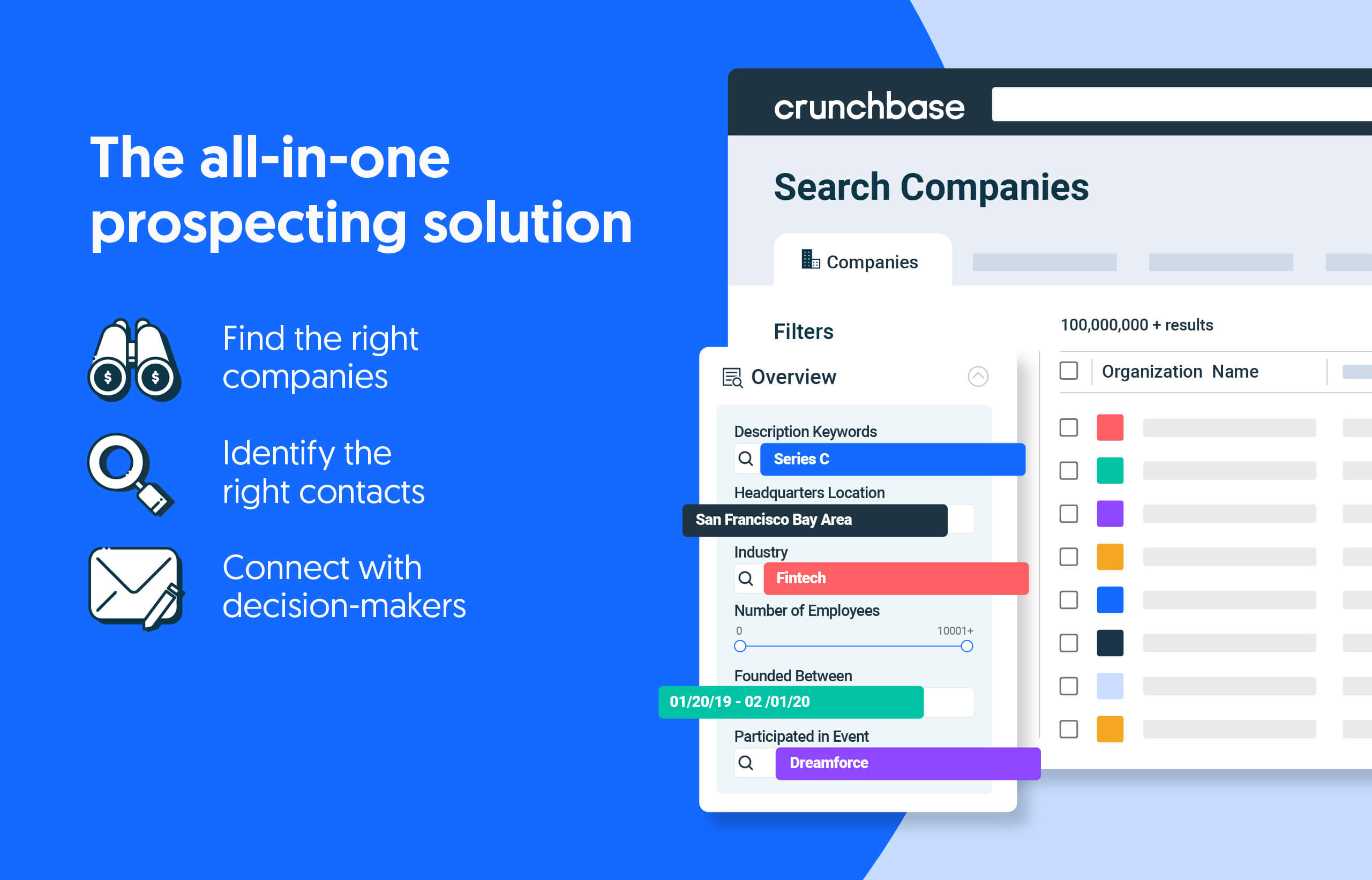Who has the power right now, startups or their employees?
If you ask Brian Walsh, head of San Francisco-based Wind Ventures, what he’s seeing at his portfolio companies, he’ll say: “It’s been a mix of both.”
After a sharp dip in the markets during the uncertain early days of the pandemic, tech workers experienced something of a workplace renaissance as they were no longer tethered to large cities. In 2021 valuations climbed, venture funding was plentiful, and the Great Resignation saw employees quitting in droves for better opportunities.
Search less. Close more.
Grow your revenue with all-in-one prospecting solutions powered by the leader in private-company data.
But amid 2022’s economic uncertainty—fueled by supply chain bottlenecks and inflation, coupled with crashing valuations and venture funding drying up—startups are being forced to cut back and be more nimble to weather the market.
What we’re seeing
Since we started tracking them in 2022, layoffs were at their worst in July, when 69 tech companies cut over 9,600 people, per Crunchbase data. August was better, but still brought about more than 7,500 layoffs from large companies like Snap, GoodRx and ThredUp. We’ve recorded four companies that laid off 100% of their staff in August: co-working space The Wing, proptech firm Reali, edtech-focused Edmodo and the beverage line Haus. That’s the most we’ve seen in any month this year.
A lot of that can be attributed to tech companies making their peace early on—knowing that they need to conserve cash and cut people. The height of these layoffs are likely over, said Healy Jones, an executive at the startup consulting firm Kruze Consulting, and we’ll see a steady stream of layoffs in the months to come as companies start their reckoning.
“What else are they spending money on? There’s nowhere else to cut,” Jones said. “You could reduce sales and marketing expenses a little bit, but … this is unfortunately the place you have to go if you want to save money.”
Interestingly, more companies (73, to be exact) conducted layoffs in June, but the sum total of people seemed to be less. Keep in mind that Crunchbase’s layoffs tracker doesn’t have inputted values for every layoff a company conducts.
Avoiding a down round
The world looks very different from 2021, when companies were flush with cash, partly due to record-breaking venture investments and partly due to government-funded Paycheck Protection Program loans. Companies looking for funding today are having a harder time raising larger series, which could compromise valuation.
Who pays the price for that? Employees.
“It makes sense to try to stretch your runway by doing layoffs so you can hopefully grow into your valuation and not have to eat a down round,” said Jones.
Some companies have tried to shave spending by cutting research and development budgets, or by halting new production. Others are searching for easier exit strategies, such as acquisitions. But, save for a select few niches in tech, labor is the largest spend for most tech companies, particularly those that don’t have an office. When startups need to stretch their dollars, they would rather avoid a down round and cut people.
“The world has changed. Valuations came down,” Walsh said. “From a startup perspective, when the cost of capital goes up, when it’s more difficult to fundraise, when you’re exiting this environment, this sort of really low cost capital to fuel growth at all costs, you need to change your strategy and how you’re actually going to build your company.”
Illustration: Dom Guzman

Stay up to date with recent funding rounds, acquisitions, and more with the Crunchbase Daily.








![Illustration of a man sitting on a huge pile o' money. [Dom Guzman]](https://news.crunchbase.com/wp-content/uploads/Giant_Funding-300x168.jpg)

![Illustration of Harris and Trump: 2024 presidential election candidates. [Dom Guzman]](https://news.crunchbase.com/wp-content/uploads/Election-2024-300x168.jpg)

67.1K Followers